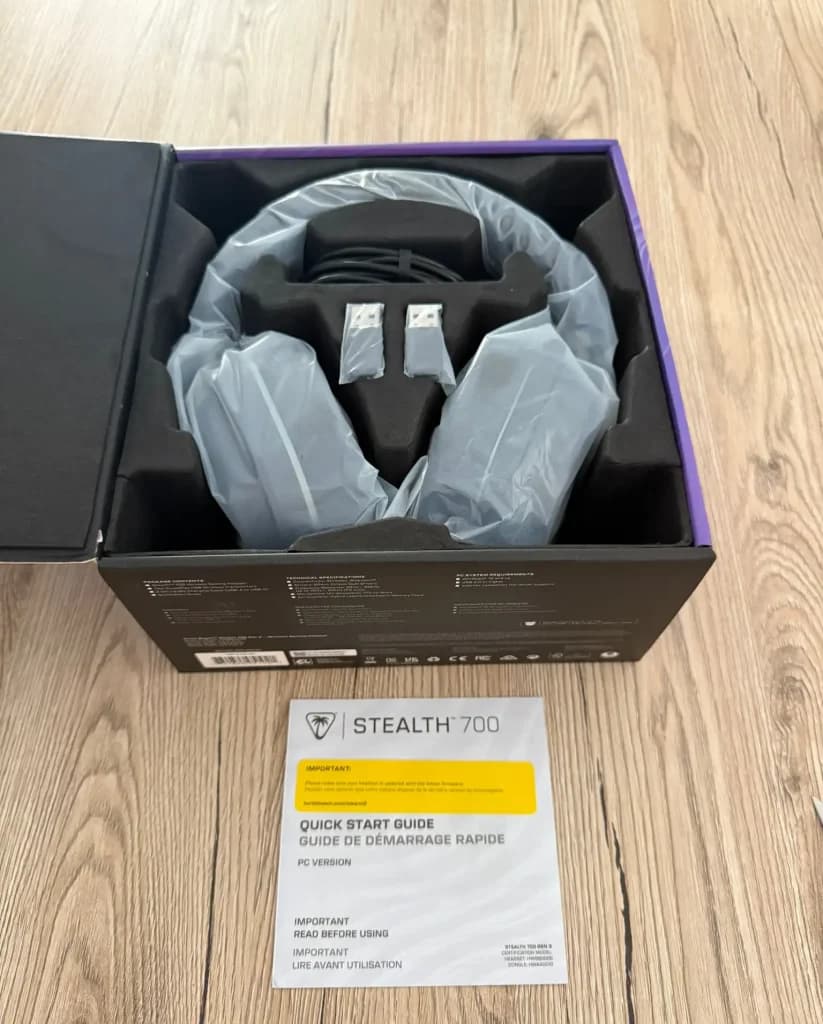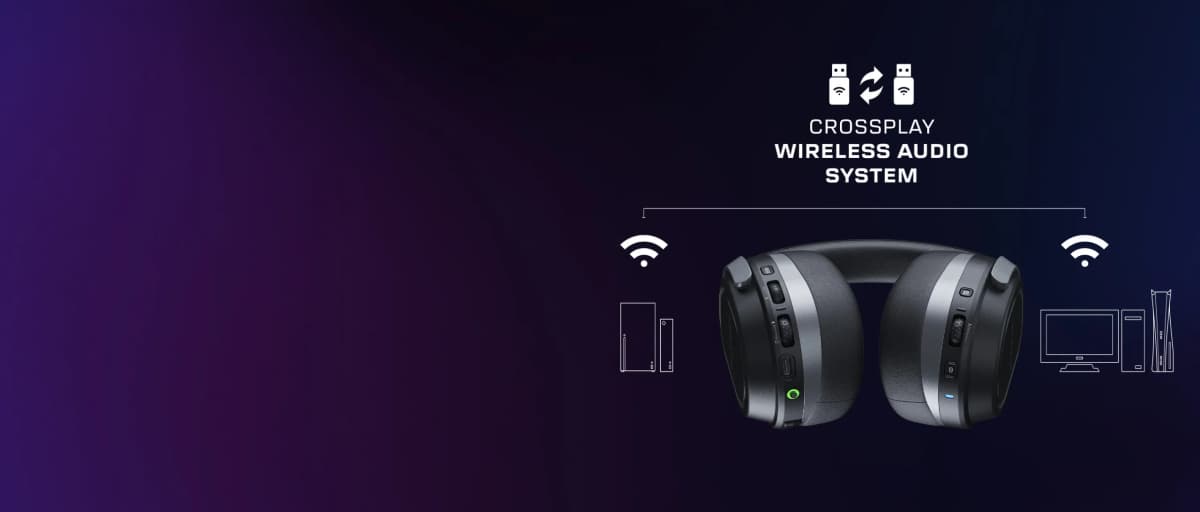
After testing everything from budget Logitech cans to studio-grade audiophile headphones, I still chase that perfect balance of immersion, comfort, and clarity.
In fast-paced shooters, hearing subtle directional cues can be life or death; during marathon RPG sessions, comfort becomes as important as crisp detail. Turtle Beach’s Stealth 700 Gen 3 promises “audiophile-grade sound,” an 80 hour battery life, and dual-wireless freedom. Excited yet skeptical, I logged weeks of multiplayer mayhem, single-player sagas, and mobile streaming. Here’s the lowdown on what it nails, where it stumbles, and whether it deserves a spot on your head—and your desk.

Right out of the box, the Stealth 700 Gen 3’s 60 mm Eclipse dual drivers deliver a gloriously full-bodied soundscape. Four onboard presets—Bass Boost, Signature Sound, Treble Boost, and Vocal Boost—let you switch profiles on the fly, but true customization lives in the Turtle Beach Swarm II app’s EQ editor.
In Overwatch and Apex Legends, I could track enemy footsteps skirting corners, even through walls. Fortnite’s glider swooshes and distant gunfire cut through the mix with clarity, giving me the confidence to push flanks. Single-player masterpieces like The Last of Us Part II transformed into sensory showpieces: dripping water, creaking floorboards, and hushed character whispers all gained depth that many pricier headsets miss.
Battlefield 2042 brought thunderous tank cannon blasts without smearing midrange dialogue, while Doom Eternal’s shrieking demons and guitar riffs snarled through the high-res pipeline without screeching. If you crave a balanced, immersive soundstage where both subtle details and booming bass shine, the Stealth 700 Gen 3 is right in your wheelhouse.
There’s no active noise cancellation here, but the over-ear design and dense memory-foam earcups provide solid passive isolation. In my moderately noisy home office—roommates chatting, fridge humming—most distractions faded. At max volume you’ll hear some leakage, though: a roommate nearby might catch faint battle sounds. If absolute silence is a must in dorms or shared spaces, this could matter.
The flip-to-mute uni-directional boom mic delivers crystal-clear voice capture and excellent background rejection. During late-night Destiny 2 raids, every callout landed without repeat requests. The satisfying mechanical flip to mute gives instant visual and tactile feedback—no more awkward “Uh, am I muted?” moments.

When stowed, the boom arm tucks neatly away, preserving a sleek profile. Unlike some budget headsets, the hinge feels rock-solid and held its position throughout intense gaming and my daily commute.
Sink into the leatherette-wrapped memory-foam earcups and you’ll swear they’re made of actual clouds. As a glasses wearer, I appreciated the even pressure distribution—no sore temples after marathon sessions. The headband’s soft padding also prevents that dreaded “chair-strap” ache behind your skull.
That said, at roughly 400 g, you’ll feel the heft after four or five hours. I found myself stretching my neck or loosening the clamp mid-session. Some rivals flirt with 300 g for ultralight design; this one leans more toward industrial-grade sturdiness. Still, the all-plastic hinges refused to squeak or crack even after repeated trips in my backpack.
Turtle Beach’s bold 80 hour battery claim held up in my mixed-use tests. After alternating between competitive play, Netflix binges, and Bluetooth music, I still hit around 75–80 hours before the low-battery LED blinked. No nightly charging chore—only plug in when you actually need it.
The dual-wireless setup is a standout. Plug the USB-C dongle into your PC, Switch, or PS5 for rock-solid, low-latency 2.4 GHz audio. Then switch to Bluetooth 5.2 for calls or Spotify on your phone without unplugging a thing. Pausing the game, pairing your device, and jumping back in took mere seconds.

Bluetooth held strong up to about 30 feet with two interior walls—occasional dropouts were nearly non-existent. Latency felt low enough for movie streaming, but I stuck to the 2.4 GHz dongle for intense FPS sessions to eliminate any hint of lip-sync lag.
The Swarm II companion app is your command center for firmware updates, granular EQ tweaks, and virtual surround sound settings. It offers drag-and-drop EQ bands, game-specific presets, and cloud backups. I built a “Horror Mode” preset with sibilant highs for Phasmophobia cue detection and a “Shooter Mode” with chest-thumping bass for Apex Legends.
That said, I did encounter hiccups—one mid-update stall and a rare disconnect when tweaking EQ mid-match. When this happens, replugging the USB dongle or restarting the app usually fixes it. Pro tip: schedule firmware updates outside critical sessions and hit “Save to Cloud” often.
Compared to similarly priced options like the SteelSeries Arctis 7 P+ or Corsair Void Elite, the Stealth 700 Gen 3 shines in battery life and mic clarity. The Arctis 7 P+ offers similar dual-wireless support but caps at around 30 hours, while the Void Elite’s mic can sound boxy. If you crave ANC, headsets like the Razer Barracuda X slightly undercut this model’s battery life but add hybrid noise canceling—though they can’t match Turtle Beach’s raw playback hours.
Buy if you:
Skip if you:
The Turtle Beach Stealth 700 Gen 3 nails the essentials: deep, customizable audio; a professional-grade boom mic; marathon battery life; and true dual-wireless convenience. Yes, it’s a bit bulky, lacks ANC, and the Swarm II app can glitch—but if those trade-offs aren’t deal-breakers, you’ll find serious value under $200. For immersive sound and reliable comms, it competes with—and often outperforms—many rivals in its class.
Get access to exclusive strategies, hidden tips, and pro-level insights that we don't share publicly.
Ultimate Gaming Strategy Guide + Weekly Pro Tips